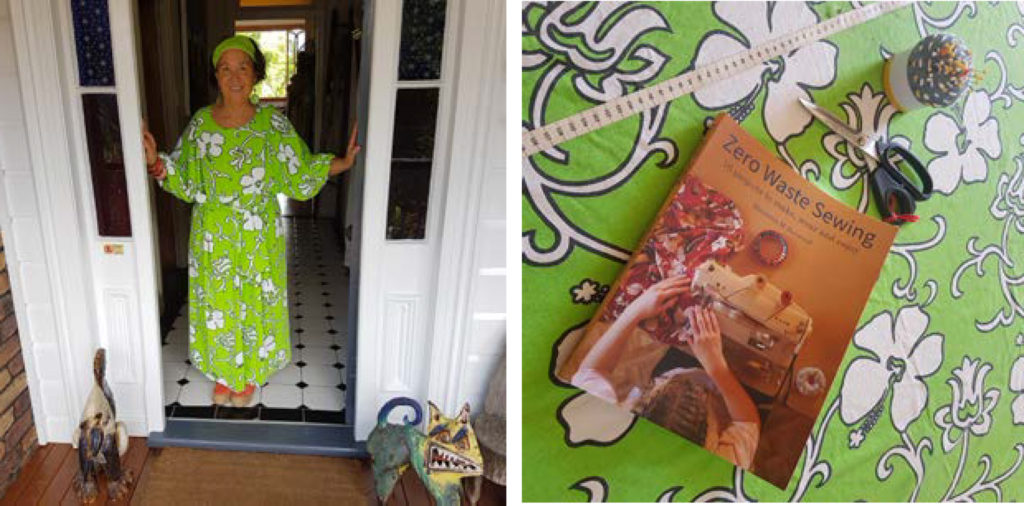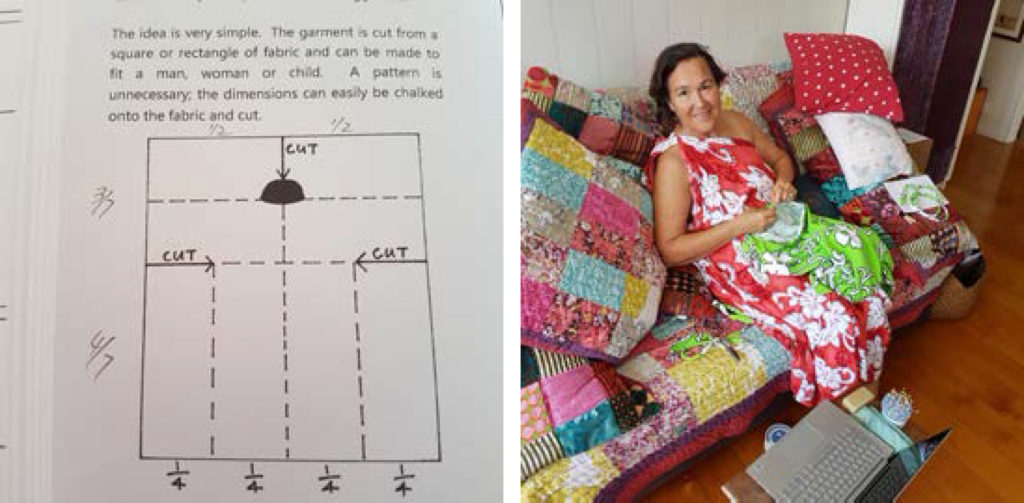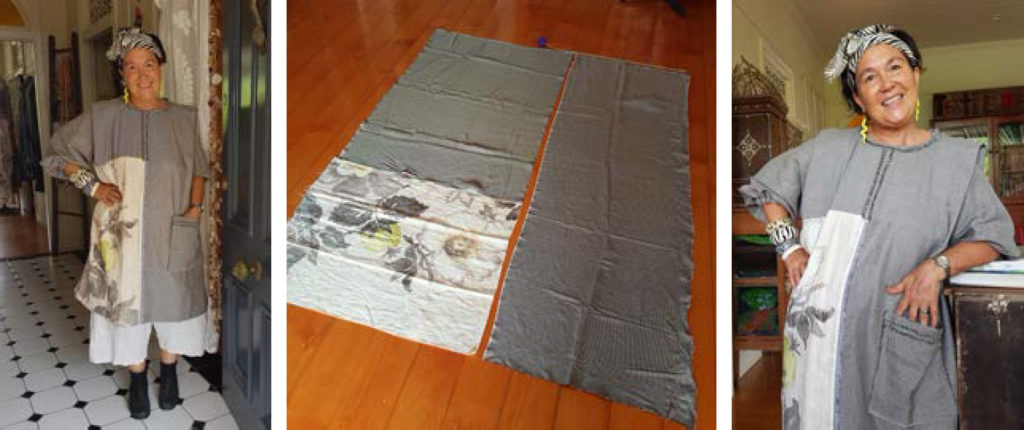Sewing in straight lines and basic math skills are all that’s required to achieve success with the simplest of the handmade clothing projects in a clever new book Zero Waste Sewing from South Australia’s Elizabeth Haywood.
Zero Waste Sewing is a practical and resourceful book based around 16 projects to make, wear and enjoy, with plenty of opportunity to modify and adapt them to suit your shape and preferences.
Through her ingenious patterns, Liz inspires a sustainable, resourceful approach by showing us how to use 100 per cent of the fabric, with nothing left over. Such a great goal to work towards!
The Craft of Clothes is Liz’s blog about sewing and fashion, and her earlier book The Dressmakers Companion, reflect her background and experience as a pattern maker and sewing teacher.

As Liz says in the introduction, zero waste is a modern phrase for a concept that is as old as the practice of wearing clothes. It is inherent in traditional and folk clothes where fabric was hand loomed and precious. Zero waste is what we need to get back to, because cutting down on waste is a way of saving the need to produce new resources. If all we do is reduce waste in our everyday practice of eating and dressing, then that can make a difference in the long-term. These patterns also lend themselves to upcycling fabric from discarded doonas, curtains and remnants.
Zero Waste Sewing gathers the 16 projects under three sections: tops from squares of fabrics; one seam dresses and jackets; and tessellated garments which use repeated shapes.
I’m so excited to have made the one-seam pattern to make two dresses using fabric from my stash. They were simple to make and are comfortable to wear.
The green floral knit fabric was 150cm wide so this one-seam dress construction was a simple matter of making three cuts (the sleeves and front neckline, see drawing) then stitching according to Liz’s instructions. I just turned the neckline under and hand-stitched in place. Dress made in a flash!

Next, I made the a black check and floral one-seam linen dress construction. This required doing some math to work out how to integrate a $3 floral linen remnant I’d been wanting to use for so long. Applying the proportional measurements in Liz’s diagrams (above) was very useful.
This time I used bias-binding to finish the neckline and featured the fringed edges of fabric on the outside of the front seam, and added a pocket with fringed edges. With both dresses, I elasticized the sleeves, and for the linen dress I did a tuck at each shoulder to reduce volume and create shape.

The key thing to do when selecting fabric is make sure it is wide enough to go around your hips. This is how I ended up with long sleeves on both garments, because I needed wide fabric! Narrower fabric can be used, you just need the maths and join pieces together (as I did with the black check, see above) and be strategic in how you join it. Instead of cutting you are just not-sewing the joins, if you get my meaning.
It was so much fun sewing these new designs and I can’t wait to find time to make more. I love being able to create something original, using materials already to hand, and particularly look forward to trying the tessellated patterns.
The instructions and diagrams are useful for beginner sewists. For myself, as an intermediate sewist and upcycler, looking at the diagrams was both affirming and inspiring because they fully show the process. I mainly worked off the diagrams, rather than reading the comprehensively written words, and enjoyed the sense of exploration this brought.
There are lots of good sewing tips included in Liz’s book, with step-by-step illustrations on the various processes used in the patterns.
Zero Waste Sewing is fun, insightful and useful as a resource for anyone interested in making their own clothes as a way of being self-sufficient, sustainable and uniquely styled.
Check Liz’s website for more details about this book, and Liz’s earlier book The Dressmaker’s Companion. If you live in South Australia, Liz’s official book launch is on Tuesday 17th of March, 7pm Aust Central Time at Clare library, and will include a showing of 14 outfits from the book.